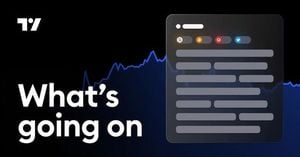Apple has recently announced its latest budget smartphone, the iPhone 16e, aimed at delivering high-end features at more accessible pricing. Set to become available on February 28, 2025, the iPhone 16e arrives at approximately Rs 20,000 less than its more premium counterpart, the iPhone 16. This article offers a comparative analysis of the two models to aid consumers deciding which device best fits their needs.
Both the iPhone 16e and iPhone 16 spotlight their sleek 6.1-inch Super Retina XDR OLED displays with 1080p resolution and 60Hz refresh rates. Yet the resemblance ends there. The iPhone 16 showcases Apple’s Dynamic Island feature, adding interactivity to its interface, whereas the iPhone 16e maintains the standard wide notch design, reminiscent of previous iPhones like the iPhone 14. Therefore, users seeking modern aesthetics may find the iPhone 16 more appealing.
On the performance front, both devices are powered by Apple’s latest A18 chip; nonetheless, Apple's approach differs slightly. The iPhone 16 boasts five GPU cores, offering enhanced graphical performance ideal for gaming enthusiasts, whereas the iPhone 16e runs on four GPU cores, potentially limiting its capabilities during graphics-intensive applications. The chipset difference shapes how each phone handles demanding tasks, with the iPhone 16 bringing superior performance.
When it pertains to connectivity, the iPhone 16 leverages the Snapdragon X75 modem for impressive 5G capabilities. On the other hand, the iPhone 16e adopts Apple’s new C1 modem—an innovation for the company, though the comparative effectiveness of this modem remains to be fully evaluated. Early reports suggest the C1 modem guarantees lower energy consumption, enhancing battery life, yet its performance against well-established competitors may require time to dissect.
The camera system also sets the devices apart significantly. Both models feature a 48-megapixel primary camera; yet, the iPhone 16 employs a larger sensor of 1/1.56 inches compared to the iPhone 16e's 1/2.55 inches, leading to superior low-light performance and overall image quality. Plus, the iPhone 16 includes a 12MP ultra-wide-angle lens capable of shooting 3D or spatial videos, absent from the iPhone 16e, which lacks this feature altogether. Despite sharing identical front cameras, the photography experience roots itself firmly within the iPhone 16.
Battery capacity also presents substantial differences. Each device supports 20W wired charging, yielding relatively similar total video playback times—26 hours for the iPhone 16e and 27 hours for the iPhone 16. Interestingly, the iPhone 16 supports faster MagSafe charging up to 25W, whereas the iPhone 16e’s capabilities peak at merely 7.5W through standard Qi charging. Users seeking convenient charging options may undoubtedly favor the iPhone 16, as enhanced charging utility adds to the overall user experience.
Considering pricing, the iPhone 16e launches at Rs 59,900 compared to the iPhone 16’s Rs 79,900. While saving Rs 20,000 is quite appealing, prospective buyers should assess their requirements carefully. If budget restrictions apply, the iPhone 16e presents itself as attractive without sacrificing core functionalities. If, on the contrary, users prioritize camera performance, display quality, or advanced VR capabilities, investing the additional sum may prove worthwhile.
Experts note several nuances to take note of when choosing between the models. With the iPhone 16e focusing on offering the essentials at reduced cost, users gain access to decent performance coupled with core iPhone features. Yet, discerning consumers may conclude the additional perks available through the iPhone 16—like enhanced graphics performance, superior camera features, and convenient charging options—make the added expense advantageous.
Conclusively, Apple continues to innovate, ensuring its smartphone lineup caters to various consumer needs. The decided differences between the iPhone 16e and the iPhone 16 may steer buyers either way, depending on personal priorities and budget flexibility. Whether to opt for the economical choice or splurge on the flagship model remains one of the pivotal discussions for Apple's enthusiasts this season.



